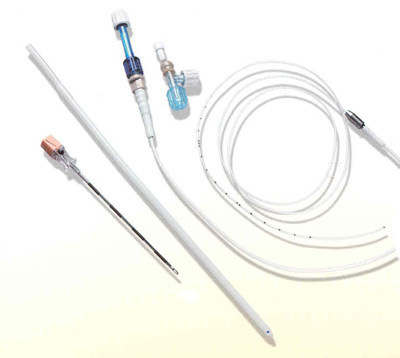From CremonaWeb : "The epidural – explains the head of gynecology of the garrison, Mauro Melpignano – is practiced by the anesthetist at the request of the patient herself". In general, the parturients arrive already with the idea of doing this type of birth, and contact the anesthesiologist some time before. And there are not a few women who choose this method of birth. Just take a look at the data. "Of about 650 parturients in 2005 – explains Luigi Borghesi, head of the Oglio Po anesthesia service – about a third had a caesarean section, for various reasons, while of the remaining 400, a hundred chose an epidural" . So the demand is strong, for a methodology which, however, unfortunately, is a paid service. It is unthinkable – comments Borghesi – that in 2006 there are still women in the ward who cry out in pain while giving birth. Hospitals today are alert to all kinds of pain, except for childbirth pain, which is too often ignored. In detail, to perform this procedure at the onset of labour, the patient is made to lie on her side or sit up. Intravenous pressure is monitored, and the skin of the lower back is disinfected. The anesthetist then injects the local anesthetic into the skin and subcutaneous tissue with a normal syringe.
From this moment on, the patient may feel a slight pressure sensation due to the introduction of the epidural needle. Once the epidural space is reached, a small tube is introduced through the needle and will be left until delivery is complete. During these manoeuvres, the patient may feel a small and transient shock. When the catheter is positioned correctly, the needle is removed, while a sterile dressing will keep the tube in the right position thus preserving freedom of movement. This epidural catheter will be used to inject the medications needed to control pain during labor at different times. Epidural anesthesia relieves the pain of contraction, while allowing the patient to actively collaborate with the thrusts in the expulsive period of childbirth. In fact, the expectant mother remains awake and conscious for the entire duration of the labor and this allows her to appreciate the experience of childbirth, which does not happen with the use of total anesthesia, which can indeed run the risk of giving birth a little lively and sleepy child. The undesirable effects reported in the information form to be signed are: – Fetal bradycardia (slowing of the fetal heart rate) – Reduction of the uterine contractile force (temporary or not) – Slowing of the progression of the presented part (difficult descent of the fetal body into the birth canal) . In obstetric practice, these factors lead to an increased use of: – Cesarean section – Forceps or vacuum extractor In any case, the side effects of this procedure are far lower than those of general anesthesia.  The photo above shows the kit needed for epidural anesthesia.
The photo above shows the kit needed for epidural anesthesia.
You may also like
Business Phone Subscriptions: Guide to Costs, Options and Benefits
Choosing a business phone subscription can be a complex task, with numerous factors such as costs, benefits, and options to consider. This article explores various business phone subscriptions, examining the best deals and geographic cost variations to help businesses make informed decisions.
Private Mobile Phone Subscriptions: Finding the Best Fit for Your Needs
Selecting a mobile phone subscription can be daunting with myriad plans and hidden costs. This article explores various phone plans for private use, comparing prices and highlighting key considerations to help you choose the best mobile service provider.
Green Energy and Charging Stations: Proposals and Costs
As the world shifts towards greener energy sources, the demand for electric vehicle (EV) charging stations is on the rise. This article examines the current landscape of EV charging infrastructure, comparing proposals, costs, and benefits. We delve into geographic cost variations and spotlight the most competitive charging station offers.
Analysis of Green Energy Through Photovoltaic Panels
As the world searches for sustainable solutions to combat climate change, solar energy emerges as a frontrunner. This article explores the various proposals, costs, and advantages associated with photovoltaic panels, providing a comprehensive guide to understanding and investing in solar power. It also delves into geographical cost variations and compares current market offerings for optimal decision-making.
